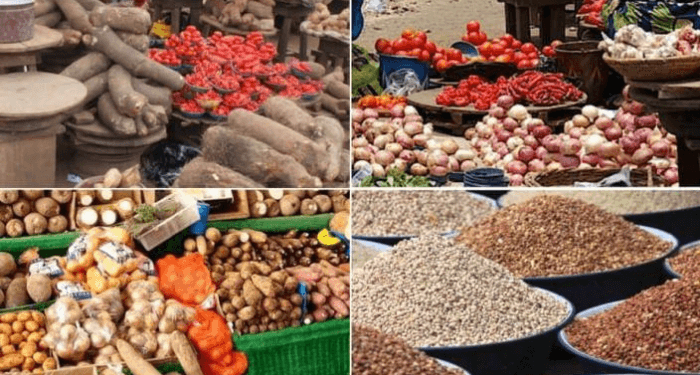The organised private sector, on Monday, blamed the worsening insecurity in the country for the food inflation which increased to 40.87 per cent in June 2024 up from 25.25 per cent in June 2023.
Data released by the National Bureau of Statistics on Monday showed that the rise in food inflation in June 2024 represented a 15.62 per cent point increase year-on-year and a 2.55 per cent rise month-on-month.
The NBS report showed that the highest increases in food prices were recorded in millet, garri, guinea corn, yam, water yam, coco yam, groundnut oil, palm oil, catfish, and dried fish.
It stated that the hike in the costs of these commodities pushed up the country’s rate of inflation during the review month.
This came as the Nigerian Association of Chambers of Commerce, Industry, Mines, the Lagos Chamber of Commerce and Industry, as well as economic experts decried the persistent insecurity across the country.
They also called for massive investments in rural infrastructure, stressing that the Federal Government must tackle the rising food inflation to address hunger in Nigeria.
An economist at Lotus Beta Analytics, Shedrach Israel, attributed the surge in food inflation to various factors, including over-reliance on importation, exchange rate fluctuations, insecurity, and global economic uncertainty.
40.8% food inflation
Giving a breakdown, the NBS stated, “The food inflation rate in June 2024 was 40.87 per cent on a year-on-year basis, which was 15.62 per cent points higher compared to the rate recorded in June 2023 (25.25 per cent).
“The rise in food inflation on a year-on-year basis was caused by increases in prices of the following items: millet whole grain, garri, guinea corn, etc (bread and cereals class), yam, water yam, cocoyam (potatoes, yam and other tubers class), groundnut oil, palm oil, etc (oil and fats class) and catfish dried, dried, etc.
“On a month-on-month basis, the food inflation rate in June 2024 was 2.55 per cent which shows a 0.26 per cent increase compared to the rate recorded in May 2024 (2.28 per cent)”
The NBS stated that the average annual rate of food inflation for the 12 months ending June 2024 was 35.35 per cent, an 11.31 per cent point increase from the average annual rate of change recorded in June 2023.
The core inflation rate, which excludes the prices of volatile agricultural produces and energy, stood at 27.40 per cent in June 2024, up by 7.34 per cent, when compared to the 20.06 per cent recorded in June 2023.
According to the Consumer Price Index and Inflation Report for June 2024, the NBS attributed the rise in food inflation on a year-on-year basis to increases in prices of the following items, millet whole grain, garri, guinea corn, etc (bread and cereals class), yam, water yam, coco yam (potatoes, yam and other tubers class), groundnut oil, palm oil, etc (oil and fats class) and catfish dried, dried fish-sardines, mudfish (fish class), etc.
It said, “The average annual rate of food inflation for the 12 months ending June stood at 35.35 per cent, which was an 11.31 per cent point increase from the average annual rate of change in June 2023 which was 24.03 per cent.”
Edo records highest
A breakdown of the NBS data indicated that food inflation on a year-on-year basis was highest in Edo (47.34 per cent), Kogi (46.37 per cent), Cross River (45.28 per cent), while Nasarawa (34.31 per cent), Bauchi (34.78 per cent) and Adamawa State (35.96 per cent), recorded the slowest rise in food inflation.
On a month-on-month basis, June 2024 food inflation was highest in Yobe (4.75 per cent), Adamawa (4.74 per cent), and Taraba (4.12 per cent), while Nasarawa (0.14 per cent), Kano (0.96 per cent) and Lagos (1.25 per cent) recorded the slowest rise.
Generally, Nigeria’s inflation figure rose to 34.19 per cent in June, about 0.24 per cent points from the previous headline inflation rate of 33.95 per cent in May. The rate of increase was also higher month-on-month at 2.31 per cent higher than the rate recorded in May 2024 (2.14 per cent).


